Filter by

Excursions in Harmonic Analysis, Volume 3 The February Fourier Talks at the …
This volume consists of contributions spanning a wide spectrum of harmonic analysis and its applications written by speakers at the February Fourier Talks from 2002 – 2013. Containing cutting-edge results by an impressive array of mathematicians, engineers, and scientists in academia, industry, and government, it will be an excellent reference for graduate students, researchers, and professio…
- Edition
- -
- ISBN/ISSN
- 978-3-319-13230-3
- Collation
- 63 b/w illustrations, 38 illustrations in colour
- Series Title
- -
- Call Number
- -

Excipient Applications in Formulation Design and Drug Delivery
In recent years, emerging trends in the design and development of drug products have indicated ever greater need for integrated characterization of excipients and in-depth understanding of their roles in drug delivery applications. This book presents a concise summary of relevant scientific and mechanistic information that can aid the use of excipients in formulation design and drug delivery ap…
- Edition
- -
- ISBN/ISSN
- 978-3-319-37107-8
- Collation
- 86 b/w illustrations, 75 illustrations in colour
- Series Title
- -
- Call Number
- -

Textbook of Personalized Medicine
Advances in the technology used in personalized medicine and increased applications for clinical use have created a need for this expansion and revision of Kewal K. Jain’s Textbook of Personalized Medicine. As the first definitive work on this topic, this book reviews the fundamentals and development of personalized medicine and subsequent adoptions of the concepts by the biopharmaceutical in…
- Edition
- -
- ISBN/ISSN
- 978-1-4939-2553-7
- Collation
- XL, 732
- Series Title
- -
- Call Number
- -
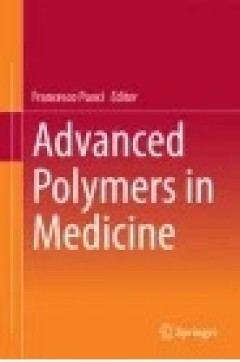
Advanced Polymers in Medicine
The book provides an up-to-date overview of the diverse medical applications of advanced polymers. The book opens by presenting important background information on polymer chemistry and physicochemical characterization of polymers. This serves as essential scientific support for the subsequent chapters, each of which is devoted to the applications of polymers in a particular medical specialty. …
- Edition
- Ed. 1
- ISBN/ISSN
- 978-3-319-12478-0
- Collation
- VIII, 537
- Series Title
- -
- Call Number
- 615.4 ADV a
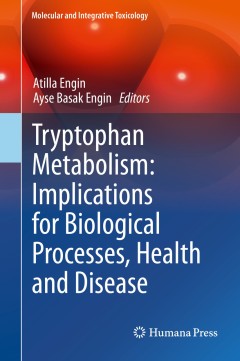
Tryptophan Metabolism: Implications for Biological Processes, Health and Disease
This book discusses the relationship between cellular immunity and tryptophan metabolism, as well as its products, serotonin and melatonin, in the development of several diseases and reappraises the common signal transduction pathways of the neurodegenerative diseases, carcinogenesis, immune tolerance, inflammation, hypersensitivity reactions, neuropsychiatric disorders, in addition to bacteria…
- Edition
- -
- ISBN/ISSN
- 978-3-319-15630-9
- Collation
- XI, 382
- Series Title
- -
- Call Number
- -
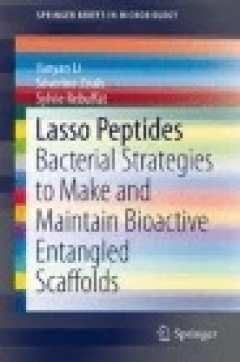
Lasso Peptides: Bacterial Strategies to Make and Maintain Bioactive Entangled…
Lasso peptides form a growing family of fascinating ribosomally-synthesized and post-translationally modified peptides produced by bacteria. They contain 15 to 24 residues and share a unique interlocked topology that involves an N-terminal 7 to 9-residue macrolactam ring where the C-terminal tail is threaded and irreversibly trapped. The ring results from the condensation of the N-terminal amin…
- Edition
- -
- ISBN/ISSN
- 978-1-4939-1010-6
- Collation
- -
- Series Title
- -
- Call Number
- -
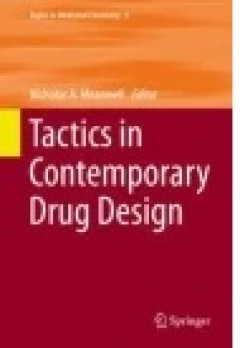
Tactics in Contemporary Drug Design
Medicinal chemistry is both science and art. The science of medicinal chemistry offers mankind one of its best hopes for improving the quality of life. The art of medicinal chemistry continues to challenge its practitioners with the need for both intuition and experience to discover new drugs. Hence sharing the experience of drug research is uniquely beneficial to the field of medicinal chemist…
- Edition
- -
- ISBN/ISSN
- 978-3-642-55041-6
- Collation
- XII, 394
- Series Title
- Topics in Medicinal Chemistry
- Call Number
- -

Modeling in Biopharmaceutics, Pharmacokinetics and Pharmacodynamics
The state of the art in Biopharmaceutics, Pharmacokinetics, and Pharmacodynamics Modeling is presented in this new second edition book. It shows how advanced physical and mathematical methods can expand classical models in order to cover heterogeneous drug-biological processes and therapeutic effects in the body. The book is divided into four parts; the first deals with the fundamental princ…
- Edition
- 2
- ISBN/ISSN
- 978-3-319-27596-3
- Collation
- XXII, 483
- Series Title
- Interdisciplinary Applied Mathematics
- Call Number
- -

Basic and Clinical Toxicology of Mustard Compounds
This book offers a practical guide to the clinical management of sulphur and nitrogen mustard exposure including information on the history, pharmacology and toxicology of mustard compounds (MC). Basic and Clinical Toxicology of Mustard Compounds details the many resulting complications of sulphur mustard (SM) poisoning such as respiratory, Dermatological, Ophthalmological and Psychiatric. …
- Edition
- -
- ISBN/ISSN
- Springer Cham
- Collation
- -
- Series Title
- -
- Call Number
- 615.4
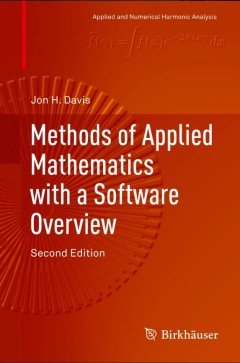
Methods of Applied Mathematics with a Software Overview
This textbook, now in its second edition, provides students with a firm grasp of the fundamental notions and techniques of applied mathematics as well as the software skills to implement them. The text emphasizes the computational aspects of problem solving as well as the limitations and implicit assumptions inherent in the formal methods. Readers are also given a sense of the wide variety of p…
- Edition
- 2
- ISBN/ISSN
- 978-3-319-43369-1
- Collation
- XVII, 781
- Series Title
- Applied and Numerical Harmonic Analysis
- Call Number
- -
 Computer Science, Information & General Works
Computer Science, Information & General Works  Philosophy & Psychology
Philosophy & Psychology  Religion
Religion  Social Sciences
Social Sciences  Language
Language  Pure Science
Pure Science  Applied Sciences
Applied Sciences  Art & Recreation
Art & Recreation  Literature
Literature  History & Geography
History & Geography